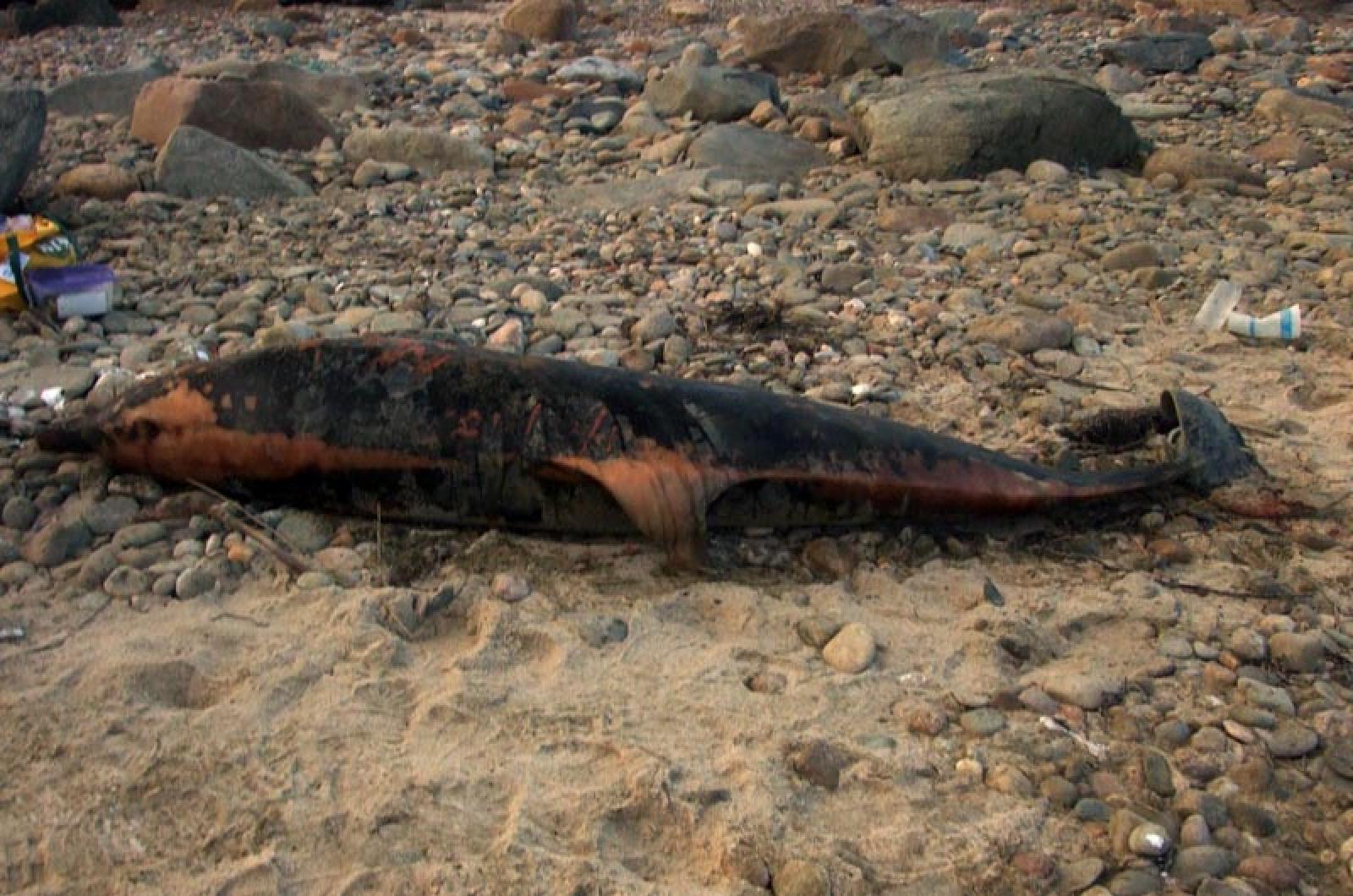In The Hitchhiker’s Guide to the Galaxy, writer Douglas Adams makes this observation, “Man has always assumed that he was more intelligent than dolphins because he had achieved so much . . . the wheel, New York, wars and so on . . . while all the dolphins had ever done was muck about in the water having a good time. But conversely, the dolphins had always believed that they were far more intelligent than man...for precisely the same reason.”
No matter who wins the intelligence award, there is one thing for certain for these two species — they both get lost. Even with their natural GPS, dolphins can and do lose their way. It is the season for these, and other marine mammals, to find themselves stranded or beached on our shores.
Whenever you find a marine mammal, alive or dead, it is important to make sure it is reported to the New England Aquarium’s Marine Animal Rescue Team at 617-973-5247. For live animals, time is of the essence. And while the rescue team is headquartered in Boston, there is a trained group of volunteers here on Island that are called in to respond quickly when live and dead marine mammals and sea turtles are found on Vineyard beaches.
It was through that network that my year started with a stranded common dolphin on a private north shore beach. According to the National Oceanic and Atmospheric Administration (NOAA), a stranding can be defined as:
1) An event in the wild where a marine mammal or sea turtle is found dead on the beach or shore or floating in US waters.
2) When a marine mammal or sea turtle is alive on the beach or shore, but unable to return to the water due to sickness or injury or some other obstacle.
3) When a marine mammal or sea turtle is in the water, but is unable to return to its natural habitat without assistance.
The common dolphin that I responded to was dead when it was found. Data collected from the animal was sent with photographs to the New England Aquarium, which collates and studies these reports. While this was my first dolphin call of the season, it may not be my last. Typically, there is an average of 38 dolphin strandings per year, but last winter broke records with more than 220 strandings.
Strandings can involve one or many individuals, with two or more (excepting a calf and mother) considered a mass stranding. The majority of strandings occur on Cape Cod beaches, primarily because the topography and geology of the Cape allow for marine animals to get stuck in the “arm” of the land. Extreme weather and oceanographic conditions can play a role as can algae blooms, sounds and geomagnetic anomalies unique to the area.
Of course there are the natural causes of illness, disease, starvation and trauma that could lead an animal astray. Compounding the problem for dolphins is their social nature which can lead members of the group to follow one animal into troubled waters.
Though it is common for folks to want to know what caused a stranding, it is not easy to tell without a full necropsy. Surprisingly, most strandings are due to natural causes, with only seven per cent in the last 10 years definitively proved to be caused by human interactions such as ship strikes, marine debris and entanglements.
In some cases of strandings of live animals, it is possible to rescue, rehabilitate and release them back in the wild. For the best result, be quick with your call and wait for the trained volunteers before attempting any action yourself. That is the smartest response for human and dolphin alike. With any luck, the vulnerable animal will be able to swim away with the final thought (and title of the fourth book in Douglas Adams’s series), “So long, and thanks for all the fish!”
Suzan Bellincampi is director of the Felix Neck Wildlife Sanctuary in Edgartown.






Comments (1)
Comments
Comment policy »